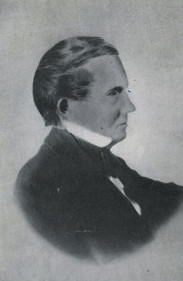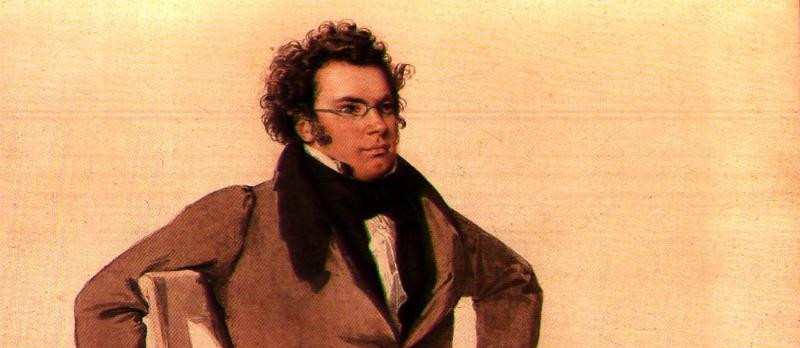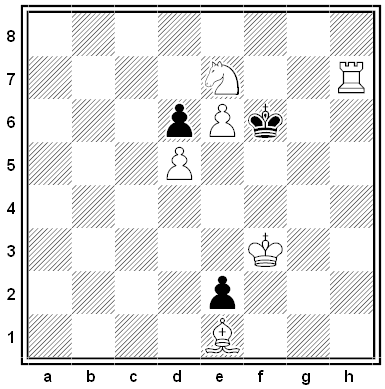Author: Greg Ross
Another One
Humans aren’t the only species that tend to move to a musical beat: Animals that mimic vocally (such as parrots and, here, a sulphur-crested cockatoo) bob their heads and move their feet. Animals that don’t mimic vocally don’t do this. So possibly our urge to move to music is a by-product of our tendency to mimic vocally — it’s a motor response to something we hear.
(Aniruddh D. Patel, et al., “Experimental Evidence for Synchronization to a Musical Beat in a Nonhuman Animal,” Current Biology 19:10 [2009], 827-830; Adena Schachner, et al., “Spontaneous Motor Entrainment to Music in Multiple Vocal Mimicking Species,” Current Biology 19:10 [2009], 831-836.)
A Near Thing
Of the loss of the Titanic there is one perfectly attested premonition.
‘On the 23d of March the Hon. J. Cannon Middleton booked a passage on the ill-fated ship, which was announced to sail on April 10. About the end of March he dreamed that he saw her floating keel upward, her passengers and crew swimming round her. The same dream was repeated the following night. Though feeling very uneasy, he told no one and took no action. But on April 4 he received a cable suggesting, for business reasons, that he postpone his journey. He consequently canceled his ticket, and then related his dream to his wife and three friends, all of whom testify to his having done so. He also produces as evidence his canceled ticket and the cable delaying his journey.’
Here the facts seem to be beyond dispute; but it is, of course, impossible to rule out the theory of coincidence. It should be noted, however, that Mr. Middleton had crossed the Atlantic a dozen times, and had never before had any such premonition or felt any nervousness. The coincidence that, just on this occasion, he should twice have a warning dream is certainly very strange.
— William Archer, “Can We Foretell the Future?”, McClure’s Magazine, December 1915
Podcast Episode 266: Lateral Thinking Puzzles

Here are seven new lateral thinking puzzles — play along with us as we try to untangle some perplexing situations using yes-or-no questions.
Equal Opportunity

Antebellum social theorist George Fitzhugh argued that slavery should be extended to whites. “It is a libel on white men to say they are unfit for slavery,” he wrote. “Catch them young, train, domesticate, and civilize them, and they would make as faithful and valuable servants as those indentured servants which our colonial ancestors bought in such large numbers from England.”
He thought that capitalism inevitably creates social inequality, and that those whom it oppresses can best be helped by subjugating them. “The whole war against slavery, has grown out of the hatred of the white to the black,” he wrote. “Nobody ever proposed to abolish white slavery, or the white slave trade. … Nobody ever proposed to abolish any other than negro slavery, and if we could buy Yankees for house-servants, and confine the negroes to field work, all this abolition strife would cease.”
The Two Squares Puzzle
Lee Sallows just sent me this — the puzzle is difficult, but the solution is stunning:

Query
What’s remarkable about this set of words?
BIOLOGY DEATHLY SLOSHED BASTARD SELVAGE FISSILE DALLIES FLAVORS
Personal
TO THE PATRIOTIC UNMARRIED LADIES. — I am a soldier, just returned from the wars. Have lost a leg, but expect to get a cork one; have a useless arm, but will be called brave for it; was once good-looking, but am now scarred all over. If any patriotic young lady will marry me, why fall in line! The applicant must be moderately handsome, have an excellent education, play on the piano and sing; and a competency will not be objectionable. One with these requirements would, doubtless, secure my affections. Address Capt. F.A.B., MERCURY Office.
— New York Sunday Mercury, Nov. 9, 1862
Prestissimo

In 18 years and 5 months (May 1810 to October 1828), Franz Schubert composed more than 1,000 works. And that’s counting complex pieces, such as operas, suites of dances for piano or orchestra, and song cycles numbering up to 24 individual items, as single compositions. From Harold Schonberg’s Lives of the Great Composers:
[Leopold von] Sonnleithner reports that ‘at Fräulein Fröhlich’s request, Franz Grillparzer had written for the occasion the beautiful poem Ständchen, and this she gave to Schubert, asking him to set it to music as a serenade for her sister Josefine (mezzo-soprano) and women’s chorus. Schubert took the poem, went into an alcove by the window, read it through carefully a few times and then said with a smile, “I’ve got it already, it’s done, and it’s going to be quite good.”‘ [Joseph von] Spaun tells of the composition of the Erlkönig. He and [Johann] Mayrhofer visited Schubert and found him reading the poem. ‘He paced up and down several times with the book, suddenly he sat down, and in no time at all (just as quickly as you can write) there was the glorious ballad finished on the paper. We ran with it to the Seminary, for there was no piano at Schubert’s, and there, on the very same evening, the Erlkönig was sung and enthusiastically received.’
When he worked, he worked feverishly. The poet Franz von Schober said, “If you go to see him during the day, he says ‘Hello, how are you? — Good!’ and goes on working, whereupon you go away.”
An Odd Episode
In April 1909, Carl Jung asked Sigmund Freud his opinion on precognition and parapsychology. As Freud was dismissing them, Jung felt “a curious sensation”:
It was as if my diaphragm was made of iron and was becoming red-hot — a glowing vault. And at that moment there was such a loud report in the bookcase, which stood right next to us, that we both started up in alarm, fearing the thing was going to topple over us. I said to Freud: ‘There, that is an example of a so-called catalytic exteriorisation phenomenon.’
‘Oh come,’ he exclaimed. ‘That is sheer bosh.’
‘It is not,’ I replied. ‘You are mistaken, Herr Professor. And to prove my point I now predict that in a moment there will be another loud report!’ Sure enough, no sooner had I said the words than the same detonation went off in the bookcase.
“To this day I do no know what gave me this certainty,” Jung said later. “But I knew beyond all doubt that the report would come again. Freud only stared aghast at me. I do not know what was in his mind, or what his look meant. In any case, this incident aroused his mistrust of me, and I had the feeling that I had done something against him. I never afterwards discussed the incident with him.”
Freud was not impressed. In a letter to Jung he wrote, “At first I was inclined to ascribe some meaning to it if the noise we heard so frequently when you were here were never again heard after your departure. But since then it has happened over and over again, yet never in connection with my thoughts and never when I was considering you or your special problem.”
A fuller account is here. It’s not clear that they ever discovered the source of the sound, but note that Freud’s letter was written in the same month as the experience, where Jung’s recollection was made in an interview half a century later — when (perhaps among other things) he had misremembered the location of the bookshelf.


